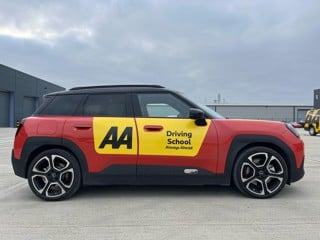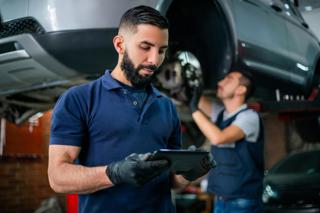Innovation and a willingness to listen and learn to what fleet operators want helped The Automobile Association regain its crown as fleet supplier of the year at the 2013 Fleet News Awards.
The company won the category in 2011 and repeated its feat this year in recognition of its growing portfolio of business services and glowing testimonials from fleet customers, which range from those with less than 10 vehicles to some with thousands.
The AA is best known for roadside assistance, but it has been steadily increasing the number of services offered to both private and business drivers.
The acquisitions of Peak Performance and Intelligent Data Systems (IDS) in 2011 have formed part of a strategy to position AA DriveTech as the UK’s leader in driver education and road safety services, while one of The AA’s major innovations in 2012 was the launch of AA FleetRiskManager.
This provides fleet managers with a real-time picture of the status of their vehicles.
It is a single, online platform containing information about drivers and vehicles, providing clear evidence that appropriate and effective risk management is in place.
Breakdown Repair cover is now available for businesses and provides fleets with help toward costs for parts and labour following a breakdown, including parts fitted at the roadside.
This policy is particularly aimed at SMEs.
The AA has also launched a number of smartphone apps for business drivers, delivered an online platform called CARS which enables fleets to view breakdown information in real-time and launched a grey fleet product to help fleets manage risk.
It also continued its focus on environmental issues through its Eco Drive app which monitors people’s driving styles and suggests improvements, as well as developing an electric vehicle/hybrid vehicle roadshow.
Customer service levels are also high. Surveys show that more than 95% of clients are either satisfied or very satisfied with the service they receive.
Within AA DriveTech from January to October 2012, delegate feedback from driver training sessions saw
an average of 99.47% of people mark the training as good or excellent.
“We are committed to the fleet sector and have been or many years,” says Roger Williams, director of fleet services.
“It is very important we understand what is happening in the fleet market because increasingly our customers are demanding more.”
Fleet News: Call-outs to hybrid and electric vehicles bring different challenges for roadside patrols than petrol or diesel cars and vans do. How has The AA adapted to this new vehicle technology?
Roger Williams: We know vehicle technology is likely to change quite considerably in the next 10 to 20 years, and we need to be able to keep up with it.
Electric vehicles haven’t really taken off in the numbers many people thought they would and, from a fleet point of view, range is still an issue, but we still need to be able to deal with them at the roadside.
We always invest a lot in our business and have invested £750,000 in an EV/hybrid vehicle training roadshow for our patrols which we are now accredited to deliver outside our organisation.
We are also testing a portable fast charger which could be the equivalent of a ‘gallon of fuel’ for EVs which have run out of charge.
FN: Smartphone technology is becoming much more widespread and The AA has developed a number of apps in response to this. How have these been received?
RW: We were looking at a strategy for mobile devices a couple of years ago and it became clear that most people contacted us on their mobile phones, so it was a natural progression that we used this technology as a way of connecting with our customers.
If someone has broken down, they can use our Business Breakdown app to contact us and this will enable us to pinpoint their location quickly.
This doesn’t mean the end of people being able to speak to a member of staff though.
Some people still want the reassurance of speaking to someone, particularly in a distress situation which, of course, breakdowns are. I can’t see that changing.
Our Eco Drive app hasn’t had the same sort of take-up among fleets as AA Business Breakdown, but we wouldn’t necessarily expect this as vehicles on operational fleets tend to have in-built telematics devices which already cover the same functions.
Some fleet drivers do find it useful though: it comes back to different fleets taking different approaches to different issues.
We know that lots more will be done by smartphones in the future and they will have a large part to play in meeting customers’ needs.
FN: The CARS online platform allows customers to see all information from The AA when a breakdown occurs, such as vehicle location and how the call-out is being dealt with. How did this come about?
RW: We developed this four to five years ago following customers’ suggestions.
Some fleets use it for the real-time information on vehicle off-road time, while from a contract hire company point of view, having the ability to know where a vehicle has been taken is pretty important.
Most of our large customers have taken it up. We are just in the process of launching the second-generation system which will give us more information.
This will probably go live in the next couple of months.
FN: AA DriveTech is now the UK’s largest provider of fleet risk management and driver education services in the UK. How have the acquisitions of IDS and Peak Performance improved the AA’s product offering?
RW: We already had a relationship with IDS so it seemed like a natural fit for us, while Peak Performance was complementary to our driver training business and has added some specialism to our products.
Driver training has a big role to play in fleets for both risk management and improving fuel efficiency. We see this as a growing market.
We have invested in this area to ensure we deliver excellent training for fleets: we discuss the policy, identify drivers needs and develop both on-line and off-line solutions for a company’s training needs.
The AA trialled its Enhanced Repair Process last year, which sees patrols undertaking repairs at the roadside to vehicles which would normally have been recovered, reducing vehicle downtime and saving businesses money.
The patrol assesses the time needed to obtain and fit the part against the recovery time to a garage before deciding what action to take.
“It does involve balancing the needs of customers,” says Williams.
“There are plenty of jobs our patrols can do, but because many of the repairs can take longer than other call-outs may, we need to be very aware of what else is happening on the roads.
“For example, if we are dealing with a driver who has a vehicle which we could deal with under the Enhanced Repair Process or recover, and we get a call from a woman with three children who has broken down, we need to react accordingly.
“As you can see, there is a balance we have to find, but the initiative has certainly been a success.”
























Login to comment
Comments
No comments have been made yet.